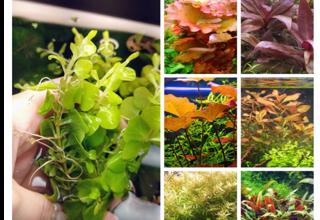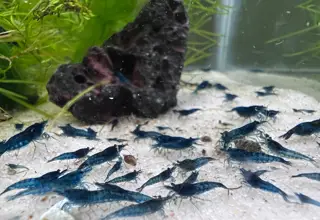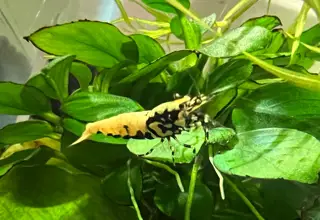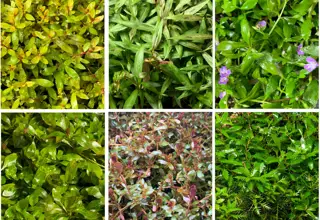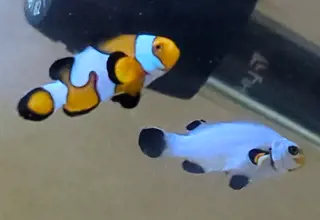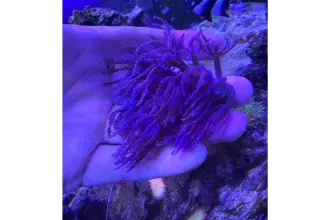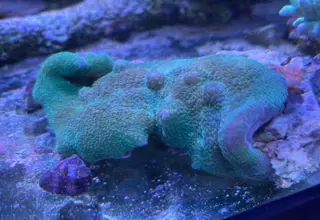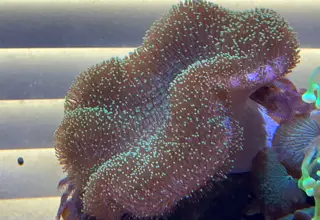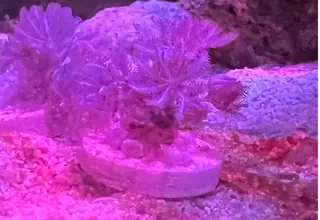Koran Angelfish: Care, Reef Compatibility, Tank Size & More
Posted by on 4/04/2023
Hobbyists looking for an easy-to-care-for angelfish should look no further than the Koran Angelfish. This massive fish from the Pomacanthus genus goes through a dramatic change in appearance as it transitions into adulthood, and hobbyists familiar with the related Emperor angelfish will likely notice their visual similarities.
While hobbyists may be eager to jump at the chance of purchasing such a unique fish, they should first be well-versed in its care requirements. In this post, we'll cover all there is to know about the Koran Angelfish so that you can decide whether or not the species is for you.
Species Summary
The Koran Angelfish (scientific name: Pomacanthus semicirculatus) has a relatively wide distribution but is based primarily in the Indo-Pacific, off the coasts of southern Japan and northern Australia. The species has also been documented swimming along the Florida coastline, and further south near South Africa. Koran Angelfish are often found swimming in pairs, up to 130 feet below the ocean's surface. These fish predominantly feed on algae and tunicates , which are abundant in the coral reefs that serve as their native habitat.
The species' common name, "Koran Angelfish" is named after a juvenile's curve-like pattern that appears on the body of the fish, said to resemble the Arabic script in the Koran .

Appearance
Koran Angelfish are a vibrantly-colored fish and go through a drastic change in appearance as they age.
When fully mature, the body of the Koran Angelfish has a lime-coloration that transitions to black towards the caudal fin. The entire fish is outlined in an electric-blue trim. The body of the fish also features a scale-like pattern covered in iridescent blue dots. The face of the fish features light-blue vertical markings and tends to be more yellow, with color intensity varying between individual fish.

Juvenile vs Adult
Juvenile Koran Angelfish appear much different than their adult counterparts. Juveniles are black and feature a blue and white tiger-striped pattern. The curvature of the stripes is said to resemble the typography written in the religious text after which it's named.

Male vs Female
Male koran angelfish are almost indistinguishable from their female counterparts.
However, adult males typically tend to be paler in coloration and have an anal fin that tapers to a point.
Size
The Koran Angelfish is a large fish, and adults will reach about 15 inches in size.
Often sold as juveniles, hobbyists will need a massive aquarium to house an adult Koran.
Koran Angelfish Care
Although these fish are quite large, once established, they're relatively easy to care for. Their care requirements are similar to other types of angelfish, and as such is best suited for the intermediate hobbyist.
Let's examine some of the things you should be aware of before purchasing the species.
Lifespan
When provided with an optimal environment and diet, the Koran Angelfish has a life expectancy of about 21 years.
Hobbyists should be prepared to care for such a long-lived species. A nutrient-rich diet and a pristine, stress-free environment will result in the longest lifespans.
Tank Size
Due to their size, you'll want to provide an aquarium that's at least 250 gallons in size.
While finding the space for such a large aquarium may be tough, you'll benefit from more stable water parameters.
Acclimation
Koran Angelfish should be acclimated in one of two ways based on the water chemistry of their transport bag. For Koran Angelfish that are transported in water that matches your display tank's salinity and temperature, you can transfer the fish directly into an acclimation box or display tank.
If salinity levels are off by more than .001 SG, you'll want to perform drip acclimation by using a drip acclimation kit . Slowly drip water from your display tank into a drip acclimation bucket, which contains the transport water, fish, and heater. After 30 minutes, re-test the conditions until salinity levels are within .001, and temperatures align. If successfully aligned, you can introduce the Koran Angelfish into your display tank, or an acclimation box.
Water Conditions
You'll want to recreate the water parameters of the Koran Angelfish's natural habitat as closely as possible.
Luckily, they share the same recommended water parameters as most other marine fish, so you should be in great shape if you can maintain the following:
Ammonia: 0ppm
Nitrite < .2ppm
Nitrate < 10ppm
Specific Gravity: 1.020-1.025
Temperature: 72°F-78°F
dKH: 8-12 dKH
pH: 8.1-8.4
Perform regular water testing with a reliable test kit to maintain these parameters over a long period.
Tank Setup
In the wild, the Koran Angelfish is known to consume marine algae as part of its overall diet. You'll want to provide tons of live rock, which in turn provides plenty of surface area for algae to grow upon. The Koran Angelfish will graze on any available algae, just be sure not to overcrowd the tank.
These fish are active swimmers, and hobbyists should allocate a large amount of tank space for them to swim around.
Powerheads are not required for the species, as the Koran Angelfish tends to dwell near the slow-moving waters of a coral reef.
Providing a sump with a refugium will aid in filtration while increasing the overall tank volume, further increasing the ecosystem's stability.
Common Diseases
Koran Angelfish are susceptible to the same common diseases that affect most marine fish. One of the most common appears as small white dots on a fish's body and is known as Marine Ich. Hobbyists should take every precaution necessary to prevent an outbreak.
Marine Velvet is another common saltwater fish disease that left untreated, can turn fatal quickly.
Hobbyists looking to learn about treatment, prevention, and symptoms should see our related post: Marine Velvet vs Ich: Similarities, Differences, Causes & Treatment.
When possible, always quarantine new tank additions to prevent a disease outbreak from occurring.
Food & Diet
Koran Angelfish are known omnivores and should consume a varied diet consisting of nori, spirulina, mysis shrimp, and brine shrimp 2-3 times per day.
These fish are known algae-eaters, and will also consume any available algae in the tank. Consider supplementing their diet with nori sheets if there is a lack of available algae.
Behavior and Temperament
The Koran Angelfish is a semi-aggressive fish, primarily towards other similarly-sized angels. In most aquariums, the Koran Angelfish will be the king or queen of the tank, and will actively swim throughout all parts of the water column as it looks for food sources to graze upon.
Hobbyists can curtail some of the fish's aggressive behavior by staying on top of regular feedings.
Reef Compatibility
Unfortunately for reef tank hobbyists, the Koran Angelfish is not considered reef-safe. It will pick at LPS corals, such as blastos, acans, and chalices.
Koran Angels will also pick at anemones, so popular Entacmaea quadricolor color morphs, such as the Black Widow should also be avoided.
Hobbyists set on keeping a Koran Angelfish in a reef aquarium should stay on top of regular feedings. Keeping your Koran Angelfish well fed will reduce the chances that they'll pick at your corals.
Tank Mates
Provided a large enough aquarium, the Koran Angelfish can co-exist with different types of Clownfish, Wrasses, Anthias, Gobies, Tangs, and other marine fish that are known for their peaceful temperament.
Gem tangs, orange-spotted gobies, powder blue tangs, snowflake clownfish, and the christmas wrasse would all make suitable tank mate additions.
Stay clear of adding other large angelfish, or dwarf angelfish such as the Pygmy Angelfish, as you'll likely end up having to deal with territorial disputes.
Also avoid large aggressive species, such as the Tessalata Eel and Blue Spotted Puffer.
Breeding
While there haven't been any reports of the Koran Angelfish being bred successfully in a home setup, the species has been successfully bred by the University of Florida's Tropical Aquaculture Lab , where they've raised Koran Angelfish fry into juveniles.
For hobbyists interested in learning more about these captive-bred Koran angels, Reefbuilders covers the topic in more detail .
Where to Purchase
Koran Angelfish can be found on our marketplace and large online vendors such as Saltwaterfish.com.
Before purchasing, always inquire about the fish's age and transport conditions so that you can correctly acclimate them.
Conclusion
While the tank size requirement will be the barrier to entry for most hobbyists, community aquarium owners and hobbyists with a large enough tank will certainly appreciate all the Koran Angel has to offer.
Now that we've discussed the ins and outs, do you plan on purchasing a Koran angelfish soon? Let us know in the comments, and be sure to visit our community forum where you can discuss fishkeeping with other hobbyists.
